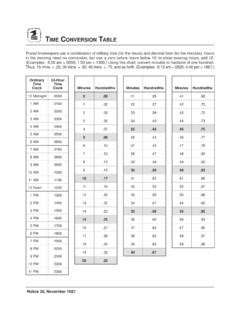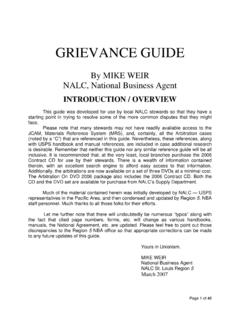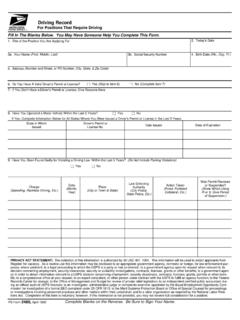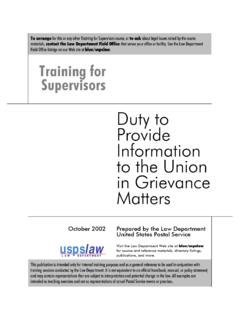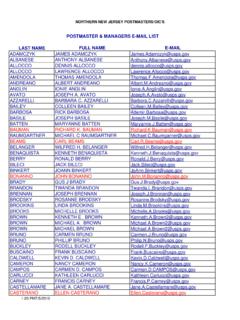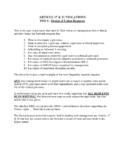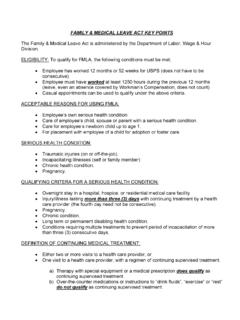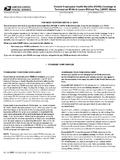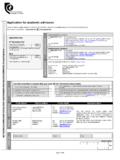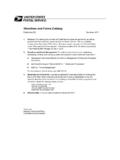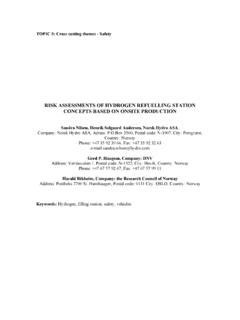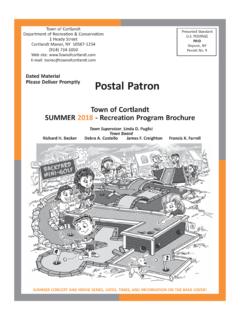Transcription of Leave Management For Labor Relations …
1 Leave Management For Labor Relations Professionals eRMS technology Principles of Leave Management October 2008 Introduction This information is provided as a resource to assist Labor Relations professionals in managing attendance. The contents reflect current postal directives contained in the Employee and Labor Relations Manual (ELM), which should be cited as the authoritative reference for attendance regulations. Leave regulations are set forth in Parts 510 and 665 of the ELM. All employees, bargaining and non-bargaining, are required to be regular in attendance and must make every effort to avoid unscheduled absences.
2 Any employee failing to be regular in attendance may be subject to appropriate corrective action. References. References and excerpts from directives contained in this guide are current as of the date of this guide. Refer to the original directive if there is any question about the accuracy, completeness, or status of the reference or excerpt. Contents Introduction Chapter 1. Role of the Labor Relations professional in Leave Management eRMS/IVR Method Non-eRMS Method Resource Management Chapter 2.
3 Principles of Leave Management Requirements of Regular Attendance Employee Responsibilities Corrective Action Emergencies Unexpected Illness and Injury Chapter 3 General Leave Control Procedures Communication Return to Work (Absence 3 days or less) Investigation Absence Review Absence Analysis Managing Medical Records Corrective Action Accountability Audit Process Overview Pre-Audit Meeting FMLA Best Practices Employee Responsibilities Supervisor Responsibilities Administrative Best Practices Glossary of Terms and Resources The Role of the Labor Relations professional in Leave Management Article 10.
4 Section 5 (Section 6 for NPMHU) provides for the continuation of the sick Leave program, whose detailed regulations are contained in ELM, Part 513 (See Chapter 2, Principles of Leave Management ). Labor Relations professionals have an integral part in managing Leave for results. When an employee fails to adhere to postal rules and regulations governing attendance, the Labor Relations professional provides administrative support in developing a course of action to ensure compliance or to address the failure or inability of the employee to comply with established expectations.
5 Labor Relations professionals should be part of the Leave Management team, including participating in Leave analysis and audits. The Labor professional can help determine if action is warranted, the appropriate action and timeliness of proposed action to ensure compliance with work rules. The enterprise Resource Management System (eRMS) is currently managed through 98 eRMS Sites covering 782,810 employees. With eRMS technology , the area and district Labor Relations professionals play an important role in supporting timely and appropriate administrative action to manage unscheduled Leave .
6 Responsibilities of the Labor Relations professional in Leave Management include but are not limited to the following: Consult regularly with managers and supervisors responsible for managing employee Leave . Provide guidance and technical assistance before administrative action procedures are initiated to ensure the proposed action is appropriate and timely. Ensure managers and supervisors have up-to-date information concerning disposition of Leave related administrative action from Step 2 / (B) through resolution or arbitrator s decision.
7 Any change to an action must be annotated in the eRMS Grievance Screen associated with the action. Participate in site reviews with the Performance Cluster leadership and Area review team. Monitor and analyze site performance: Sick Leave and Leave Without Pay (LWOP) usage, as well as unscheduled absence occurrences regularly, on a pay period basis at a minimum. Identify hot spots ( Sick Leave ratio in excess of or excessive unscheduled ocurrances), partner with the Area and District Leave Management teams to reach operational goals.
8 Enterprise Resource Management System and Interactive Voice Recognition System (eRMS/IVR) As part of our focus on operational efficiency through effective Leave Management , Resource Management technologies are continuously enhanced with features that result in reduced costs, an enhanced work environment, and improved customer service. The enterprise Resource Management System (eRMS) is an important part of the USPS effort to improve accountability, performance, and recognition. eRMS focuses on the effective Management of scheduled and unscheduled absences using the latest technology .
9 Through a standard business approach and the deployment of the latest technology , eRMS maximizes a supervisor s time by eliminating most of the manual transactional work associated with Leave requests and establishes a consistent approach to Leave Management . Its integration with the Time and Attendance Collection System (TACS) increases operational efficiency and reduces costs. The system is designed to identify unscheduled absence occurrences and provide managers with information for recognizing employees with good attendance.
10 The two systems are not linked; however, the Labor Relations professional may open GATS (Grievance Update screen) and eRMS (Grievance screen), then simultaneously update both databases. The eRMS Grievance Screen provides managers and supervisors the status of any administrative action allowing them to make appropriate Leave Management decisions. eRMS is integrated with the Time and Attendance Collection System (TACS) excluding RTACS. Both RTACS and Timecard Offices can also use eRMS to manage attendance. The integration provides real time information to managers and supervisors allowing them to make business decisions in a timely manner.
